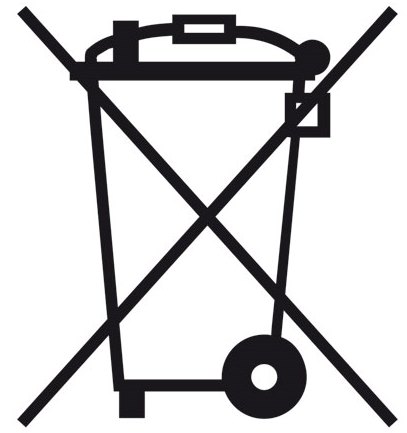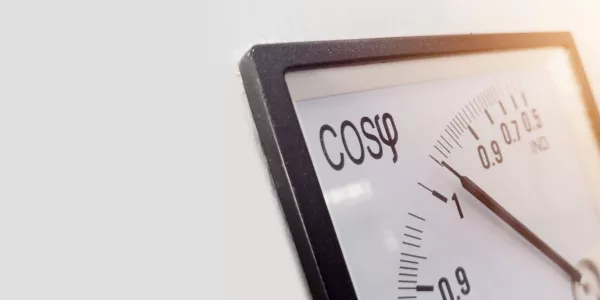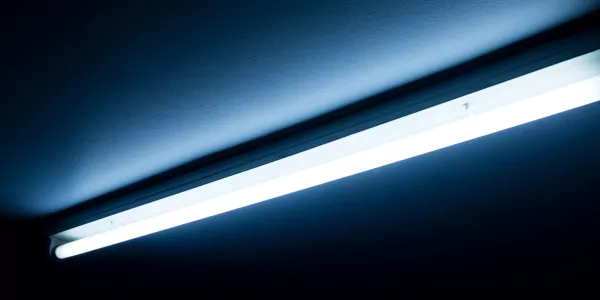The end of Cadmium batteries in portable applications
The EU is fully committed to sustainability and circularity with new regulations. In July, a new regulation was established, imposing new rules for batteries. Below is a brief summary of that regulation. One of the consequences is that Nickel Cadmium batteries (NiCd) will be banned in portable applications from August 2025. What does this mean for emergency lighting? Read on!

Reading time: 3'00"

Which regulation are we talking about?
Regulation 2023/1542 was signed on July 12, 2023, by the European Parliament and Council and published in the 'Official Journal' on July 28, 2023. This regulation replaces the 'battery directive' 2006/66/EC. The new regulation will be applicable from February 14, 2024, but there are transitional periods for many measures.
Regulation or directive?
This is a regulation, which takes immediate effect, unlike a directive that must be transposed into national regulations by member states and therefore takes effect later.
What does this mean for NiCd batteries?
Portable batteries may not contain more than 0.002% Cadmium.
- This was already the case in the past, but medical equipment, portable power tools, and emergency lighting had an exceptional allowance to use NiCd batteries under the 'battery directive' (2006/66/EC)
- The aforementioned battery directive is revoked by the new regulation, with a two-year transitional period. Starting from August 18, 2025, NiCd batteries may no longer be used in portable applications.
What does this mean for emergency lighting?
Does this mean the end of NiCd batteries in emergency lighting? This depends on the question: 'Is emergency lighting a portable application?'
- If you look at the text of the old battery directive 2006/66/EC, the exception for emergency lighting is placed under the category ‘portable batteries’. So, the legislator assumed that at least some of the batteries for emergency lighting were portable.
- But in the examples in the new regulation, emergency lighting seems to lean more towards industrial applications (such as energy storage, communication technology, power generation and distribution) than portable applications (such as smartphones, tablets, cordless drills, garden tools, toys, etc.).
ETAP therefore is taking a proactive approach
- ETAP's position is that Nickel-Cadmium batteries for emergency lighting are a technology of the past. Cadmium is one of the 10 chemical substances restricted by the RoHS directive (Restriction of Hazardous Substances) because it is a carcinogenic substance. There are better alternatives to Cadmium batteries, including Nickel-Metal Hydride (NiMH).
- Since 2011, ETAP no longer produces emergency lighting devices with NiCd batteries. Retrofit kits are provided for old devices equipped with them to quickly and efficiently switch to NiMH, which are lighter and consume less energy. The 'long-life' NiMH batteries have a lifespan that easily exceeds more than double that of NiCd.
What else is in the new regulation?
Categories
Various categories of batteries are defined:
- Portable batteries;
- Starter batteries for internal combustion engines;
- Batteries for bicycles, e-scooters, etc.;
- Industrial batteries;
- And batteries for electric vehicles.
All batteries entering the European market fall under one of the above categories. If there is a dispute about which category a battery belongs to, the category with the strictest requirements must be chosen.
Material restrictions
Strict requirements are imposed on materials:
- Mercury: batteries may not contain more than 0.0005% mercury;
- Cadmium: portable batteries may not contain more than 0.002% cadmium;
- Lead: portable batteries may not contain more than 0.01% lead (button cell batteries get a five-year extension for this).
Labels and documentation
Depending on the category and size, batteries will need to carry labels with various information, such as the battery type, manufacturer, place and date of production, weight, capacity, chemical composition, and any hazardous substances, recommended extinguishing agents, the percentage of any 'critical raw materials' such as Cobalt, Lithium, and Graphite, etc.
The familiar 'crossed-out trash bin' symbol must also be printed on them, and a QR code must be linked to the supporting documentation of the battery. Some (large) batteries must display a carbon footprint, both for battery production and the usage and recycling phases.

More recycled material in batteries
Europe aims to increase the share of recycled materials in new batteries. Some (large) batteries will need to indicate the weight percentages of Cobalt, Lead, Lithium, or Nickel, and minimum percentages of recycled materials will be required. These percentages will gradually increase.
For example, starting from 2031, (large) lithium batteries must contain at least 6% recycled lithium material, and from 2036, at least 12%.
More battery recycling
Minimum targets for collecting and recycling batteries are imposed. For example, by December 2023, 45% of portable batteries sold must be recyclable. By 2030, that target will increase to 73%.
Performance requirements
Performance requirements will be imposed for different types of batteries, with minimum values for capacity, durability, efficiency, etc. The exact values will be established in 2026. Manufacturers of large batteries will need to document the current performance criteria on the batteries.
Battery replaceability
Portable batteries must be easily replaceable for end-users. Batteries for e-bikes and e-scooters (LMT batteries) must be replaceable by an independent professional.
What does this mean for ETAP?
Sustainability is ingrained in ETAP's DNA. The company expresses this with three concepts that also emphasize a focus on circularity: endless, effortless, and wasteless.
- Endless: The most circular thing you can do is ensure that your products last forever. When selecting batteries for use in ETAP luminaires, solutions with long lifespans are always sought. For example, NiMH batteries typically have a lifespan of 8 to 10 years, and sometimes even more, as illustrated by a battery that didn't need replacement for 16 years!
- Effortless: In the design of emergency lighting, ETAP strives to make it as easy as possible for users to replace the battery and give luminaires a new life. Did you know that it's possible to replace the battery in the K9 series without touching a screwdriver?
- Wasteless: ETAP seeks recyclable solutions. NiMH batteries must be returned to Bebat (in Belgium) at the end of their lifespan. The recyclers that collaborate with Bebat achieve recycling efficiency rates between 75 and 85% for NiMH batteries.

What does the future hold?
ETAP continues to closely monitor battery regulations. Subscribe to the ETAP newsletter to stay informed about the latest developments!
The curtain on Cadmium in batteries has not yet fully fallen, but the end is approaching.
Tomorrow’s light is endless, effortless and wasteless!

Adriaan Van Nuffel is our product manager for industrial and emergency lighting. Every day, he enthusiastically explores the latest technologies and trends, seeking innovative solutions to fulfill the lighting needs of the market. This way, ETAP continues to stay ahead in the lighting market.
Contact:
+32 (0)3 310 02 11 info.be@etaplighting.com
Fanden Sie das interessant? Mehr entdecken...
- Kreislaufwirtschaft / Nachhaltigkeit
- Beleuchtungsvorschriften



